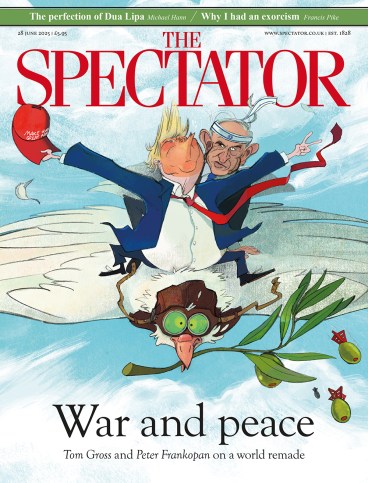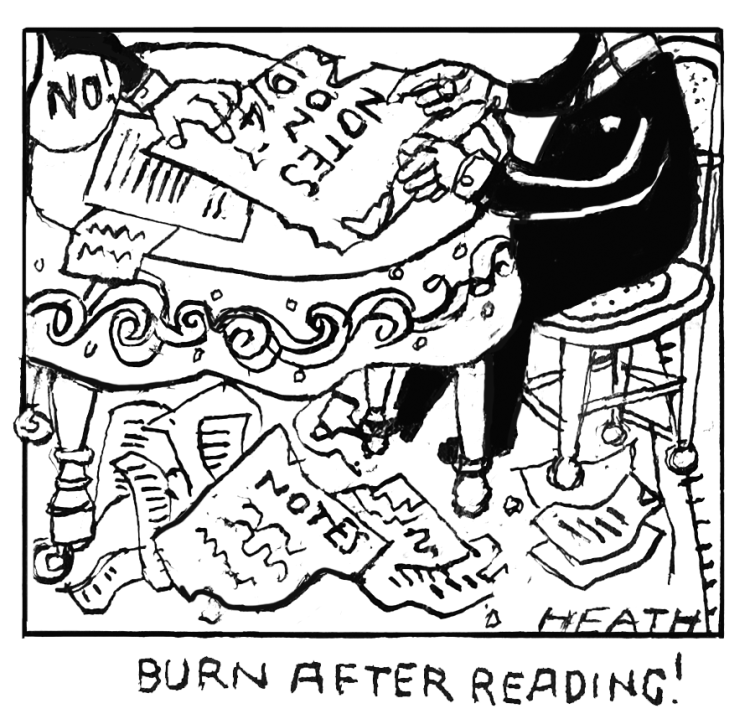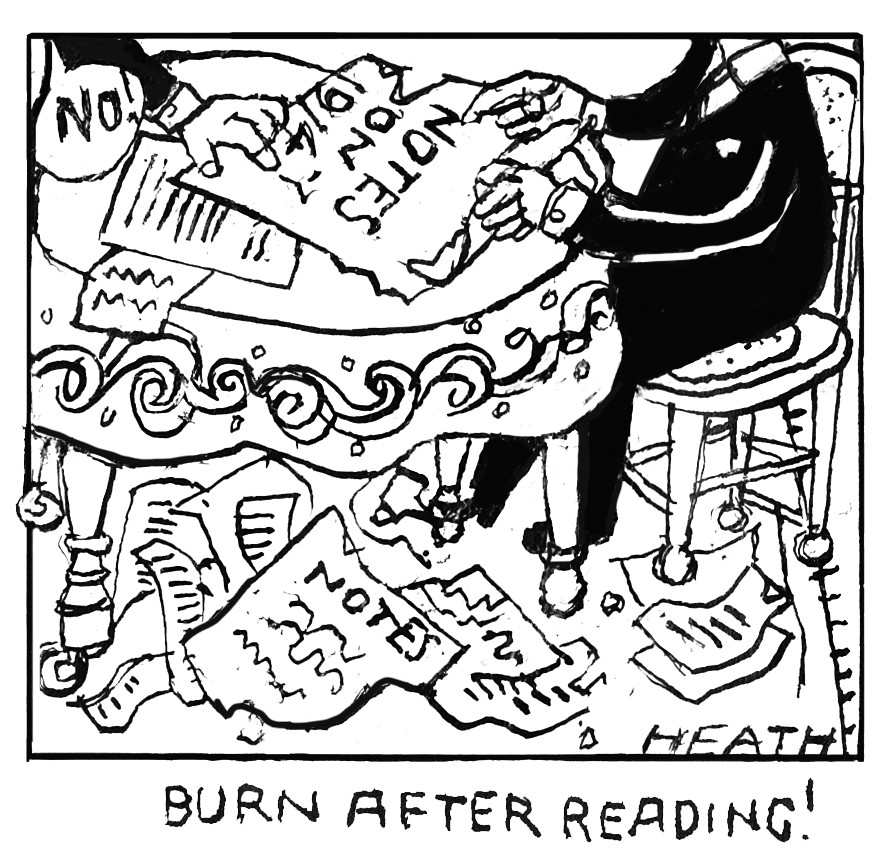
‘You asshole,’ was my friend’s cheery greeting when we met in Ludlow. I’d mucked up the time. Reconciled, we walked to his place and on the door was a note he’d left me, scrawled on a card with an image of him mimicking Philip Larkin proudly sitting on a border stone: ‘Just a note that you are an asshole. Call.’ Stuart, a collector of manuscripts, showed me a recent acquisition, a note by Sir Edward Elgar, graced with a self-portrait featuring, my friend is sure, an immodestly large penis. I think it’s his coat tail. We debated the iconography while listening to ‘Nimrod’.
Notes are often discarded – who hasn’t inherited, in the bottom of a trolley, a forlorn shopping list? But they have a long history. Their ephemerality was generally guaranteed on ancient wax tablets, scraped down for reuse. A fair few survive, however, bearing the abandoned sums or grammar of some bored Etruscan child from as long ago as the 7th century bc. An Etch a Sketch is more fun, perhaps, with its erasable text. Ironically, Keats’s epitaph, ‘Here lies one whose name was writ in water’, is inscribed in obdurate stone in the Protestant cemetery in Rome.
Notes that endure often do so when they are associated with something else of value. Exeter College, Oxford, has a fine scribal manuscript of The Twelve Caesars by Suetonius. Bonus: its owner, Petrarch, has carefully composed his notes in the margins. There is a strong academic interest in ‘scholia’ – not just annotations in important early texts but layered commentaries on the annotations themselves. If everything has been plumbed in the canonic texts, look to the edges.
The hurried informality and often surreptitious nature of a note written on the hoof can tell us much about a particular historical moment. During the first world war it was forbidden to record cabinet discussions. Lewis Harcourt did it all the same, jotting down, under the table, character sketches of Winston Churchill, among others. Notes are not always penned. Printed notices are a form never meant to endure beyond the immediate purpose of laying down some edict or announcing the start or end of a life, but usually flogging something. The Bodleian has the earliest example of print advertising in English. Dating from 1477, Caxton’s jobbing piece was intended to gee up enthusiasm for a less than thrilling priest’s manual. It promises that the buyer will have a copy ‘good chepe’. It’s worth a few bob.
The note can have a degree of scholarly credibility. The journal Notes and Queries, established in 1849 and dedicated to ‘readers and writers, collectors and librarians’, is still going strong. Entirely devoid of theoretical nonsense, it invites short observations on, and responses to, points of influence and other marvellously arcane literary niceties.
These days we still occasionally scribble stuff down on trusty paper – tomatoes, loo roll, milk, 1 btl Tia Maria, 8 btls wine – but we commit most of our scraps to the digital realm. I am writing this note for Notes On…on the Notes app on my tablet while glancing at my phone for a note from my daughter. Snapchat is the only way I can reach her and she’s made sure her laconic observations vanish soon after I have read them. Etruscan kids, modern kids. Plus ça change.








Comments